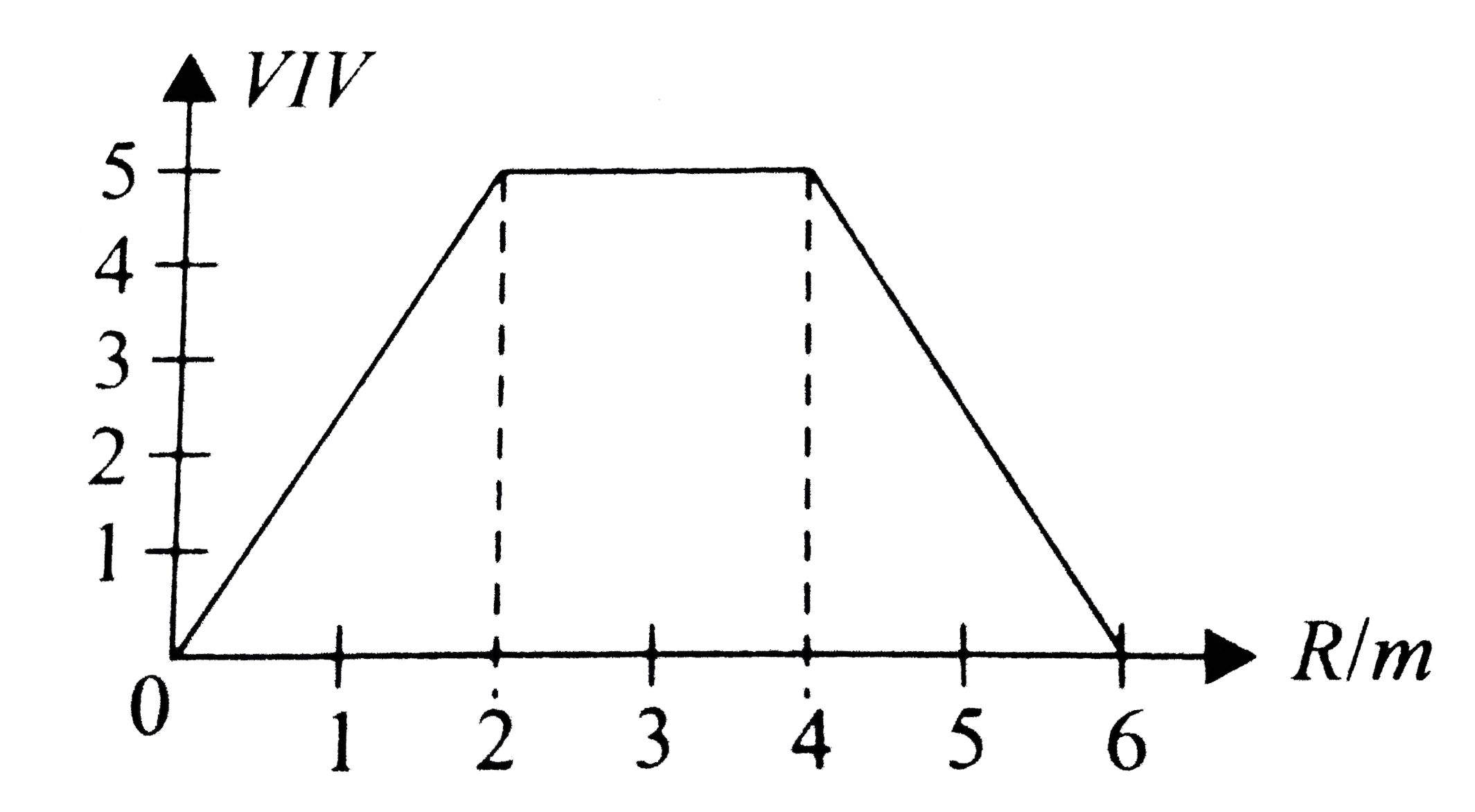At a distance r from a point located at origin in space, the electric potential varies as V=10r. Find the electric field at →r=3ˆi+4ˆj−5ˆk.
(√2)(3ˆi+4ˆj−5ˆk)
(−√2)(3ˆi+4ˆj−5ˆk)
(−√3)(3ˆi+4ˆj−5ˆk)
none of these
The correct Answer is:B
V=10r=10√x2+y2+z2
Ex=−dvdx=−10(2x)2√x2+y2+z2
=−10x√x2+y2+z2=10×3√32+42+52=−3√2
similarly
Ey=−4√2
Ex=5√2,ver(E)=Exˆi+Eyˆj+Ezˆk
Topper's Solved these Questions
- MISCELLANEOUS VOLUME 3BOOK - CENGAGE PHYSICSCHAPTER - MISCELLANEOUS VOLUME 3EXERCISE - Multiple Correct Answer type
109 Videos
- MISCELLANEOUS VOLUME 3BOOK - CENGAGE PHYSICSCHAPTER - MISCELLANEOUS VOLUME 3EXERCISE - Assertion and Reason Type
8 Videos
- MECHANICAL PROPERTIES OF SOLIDSBOOK - CENGAGE PHYSICSCHAPTER - MECHANICAL PROPERTIES OF SOLIDSEXERCISE - Question Bank
4 Videos
- MISCELLANEOUS VOLUME 5BOOK - CENGAGE PHYSICSCHAPTER - MISCELLANEOUS VOLUME 5EXERCISE - Integer
12 Videos
Similar Questions
The potential at a point in an electric field is give by V=Rr volt where r is distance of the point from the origin of the co-ordinate system. Find the electric field at a point r=(ˆi+2ˆj+2√5ˆk)m
View SolutionElectric potential at any point V=-4x+3y+5z then magnitude of electric field in the space will be
View Solution
Knowledge Check
Let V0 be the potential at the origin in an electric field →E=4ˆi+5ˆj. The potential at the point (x,y) is
AV0−4x−5yBV0+4x+5yC4x+5y−V0D−4x−5yThe variation of potential with distance R from the fixed point is shown in (Fig. 3.125).
 .
.
The electric field at R=5m is.A2.5Vm−1B−2.5Vm−1C0.4Vm−1D−0.4Vm−1The electric field and the potential of an electric dipole vary with distance r as
A1r and 1r2B1r2 and 1rC1r2 and 1r3D1r3 and 1r2
Find the distance of the point with position vector −ˆi−5ˆj−10ˆk from the point of intersection of the line →r=(2ˆi−ˆj+2ˆk)+λ(3ˆi+4ˆj+12ˆk) with the plane →r.(ˆi−ˆj+ˆk) = 5 .
View SolutionFind the shortest distance and the vector equation of the line of shortest distance between the lines given by :
(i)→r=(−4ˆi+4ˆj+ˆk)+λ(ˆi+ˆj−ˆk)
and →r=(−3ˆi−8ˆj−3ˆk)+μ(2ˆi+3ˆj+3ˆk)
(ii)→r=(−ˆi+5ˆj)+λ(−ˆi+ˆj+ˆk)
and →r=(−ˆi−3ˆj+2ˆk)+μ(3ˆi+2ˆj+ˆk).
View Solution(i) Find the distance of the point (-1,-5,-10) from the point of intersection of the line →r=(2ˆi−ˆj+2ˆk)+λ(3ˆi+4ˆj+12ˆk) and the plane →r.(ˆi−ˆj+ˆk)=5.
(ii) Find the distance of the point with position vector
−ˆi−5ˆj−10ˆk from the point of intersection of the line →r=(2ˆi−ˆj+2ˆk)+λ(3ˆi+4ˆj+12ˆk) and the plane →r.(ˆi−ˆj+ˆk)=5.
(iii) Find the distance of the point (2,12, 5) from the point of intersection of the line .
→r=2ˆi−4ˆj+2ˆk+λ(3ˆi+4ˆj+12ˆk)
and the plane →r.(ˆi−2ˆj+ˆk)=0.
View SolutionA positive charge 50 muC is located in xy plane at a position vector r0=4ˆi+4ˆj. the electric field strength E at a point whose position vector is →r=10ˆi−4ˆj is (→r0 and →r are expressed in metre)
View SolutionThe electric field and the potential of an electric dipole vary with distance 'r' as
View Solution
